Just to acknowledge the elephant in the room before we begin proper, we are a little late to the party on this one. Truth is, we did have a unit to review pre-embargo, but once we’d got everything set up and ready to rock and roll, the base didn’t recognise the wheel, nor the pedals at first.
We got in touch with MOZA and they were kind enough to send across a replacement unit, so a huge thank you to them for that!
MOZA Racing is definitely making a name for itself in the sim racing market at the moment. The R9 base caught a lot of PC sim racer’s attention, and its ever-growing selection of rims and pedals are tempting more drivers each and every day.

Diminutive direct drive wheel base
While it’s been producing premium products so far, MOZA is ready to welcome in the more entry-level consumer with the ‘R5 Simulator’ offering, a single-purchase bundle featuring a 5.5Nm direct drive base, the ES Steering Wheel, SRP Lite pedals, and a desk mount.
It’s no secret that MOZA is taking the fight to Fanatec here, as the R5 bundle ticks very much the same box as the Gran Turismo DD Pro. A 5.5Nm small form factor aluminium base, a comparatively cheaper and more simplified wheel rim, a set of pedals (throttle and brake only), and a desk mount.
It’s circling around the same price bracket also, but the kicker is that it’s only compatible with PC, whereas the DD Pro is natively compatible with PC and PlayStation, and provided you have a compatible rim, Xbox too.
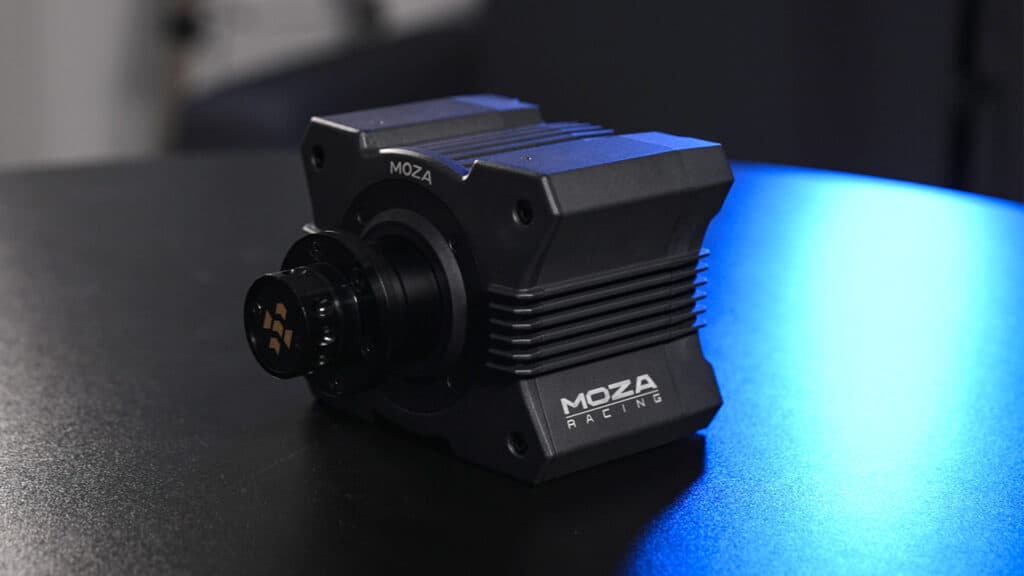
If you saw our review of the MOZA R9 base from a while ago, the R5 base is rather familiar, albeit with a shorter chassis. A solid aluminium base acts as a large heatsink, and the solid MOZA quick release is still present.
A new steering wheel
However, the actual connector between base and wheel has changed slightly, and looking at the pins within the wheel itself shows you what’s new. Speaking of wheels, the new ES rim is a slight departure from what we’re used to from MOZA, but for the right reasons.
Measuring in at a much more reasonable 280mm, and featuring a button array that more resembles a controller, it’s definitely an accommodating design to those dipping their first toe into sim racing. The lack of rotary encoders might switch some off this included rim, but if you’re one to just hop onto a game and drive, the included inputs will do you fine.

To keep the price of the R5 Simulator bundle down, the wheel has had a few things trimmed, such as ‘normal’ buttons in place over the absolutely incredible mechanical switches you find on the likes of the GS Wheel, a more simplified rev strip, no rotary encoders (so changing your brake balance or traction control on the fly isn’t as straight-forward), and non-magnetic shifter paddles, which do feel perfectly fine in practice.
Conversely, the leather rim and aluminium faceplate negate the overall cheap feeling which, compared to its immediate inspiration, the DD Pro’s Gran Turismo rim, is a huge step up.
Non-load cell pedals
The pedals however are a slightly different story. Included in this bundle are the SRP Lite pedals, a slimmed-down adaptation of the existing SRP Pedals, which we reviewed a few months ago.
Bearing only a throttle and brake pedal, the overall steel construction remains, but with more basic, brutalist foot plates, and a severe lack of resistance in the brake department. If you’re in the market for a clutch pedal, that is available as a separate add-on.
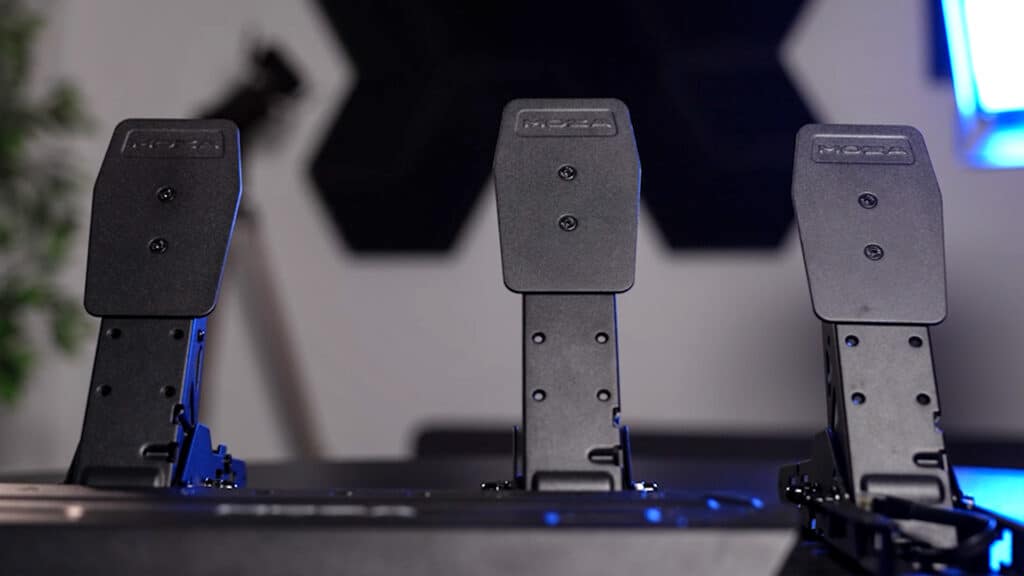
While there is a spring in each pedal to at least return it to its starting position when pressed, there is no heavy spring, elastomer, or even load cell present in the brake. In short, all three pedals feel exactly the same to each other. Borderline unacceptable in any even semi-serious sim racing situation.
Optional SRP Lite Performance Kit
It’s an issue pretty much every sim racing outlet with hands-on the SRP Lite pedals raised, so much so MOZA released an ‘SRP Lite Performance Kit’ to put the literal feeling back into the brake pedal. With this installed, the brake pedal is much more usable, but the fact it’s an after-the-fact thought and purchase definitely puts a tick in the ‘Negatives’ column for the R5 Simulator.

Simple set-up
If you’re planning on racing at your desk, the included steel desk mount does the job brilliantly. Both robust and foam padded to high-heaven, the R5 base screws directly onto it, and it’s not going anywhere. As for the pedals, large rubber feet on the underside keep things pretty stable, but we’d always recommend having the pedals up against a wall beneath your desk.
One large difference between the existing MOZA range and the R5 bundle is that, rather than pedals requiring a separate USB input to your PC, the SRP Lites plug directly into the base via CAT 5 cable. This simplifies it all down to just one USB connection rather than two.
As for mounting to a rig of some description, it’s a rather standard affair. Props again to MOZA for supplying mounting hardware in the box. However, due to the R5 base’s shorter stature, the mounting holes are now closer together. This may bring up compatibility issues with some pre-drilled mounting plates.
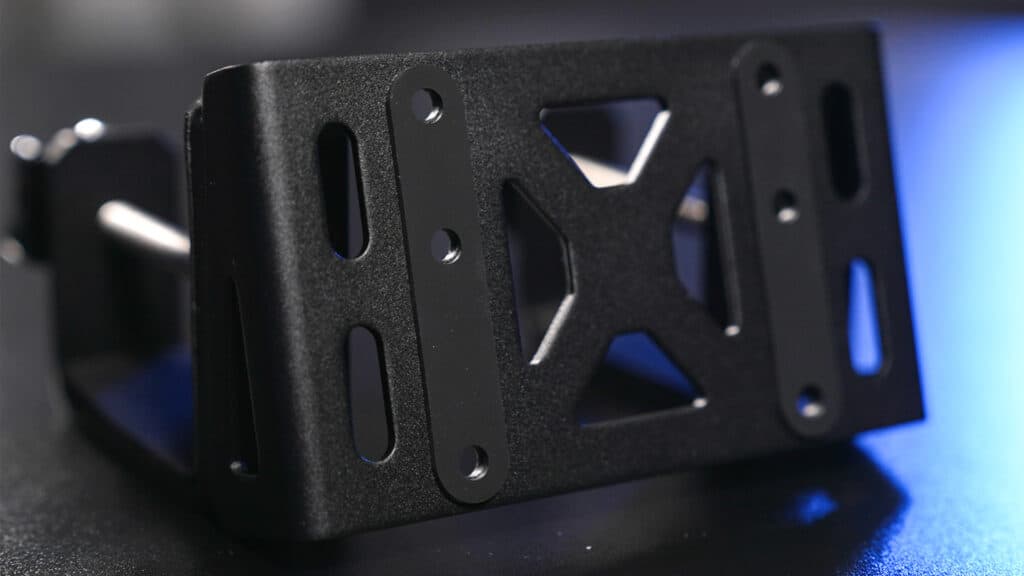
We mounted the R5 to both the Next Level Racing Wheel Stand 2.0 and the Trak Racer FS3. The R5 could be mounted using all four threads thanks to its mounting plate, whereas the Wheel Stand 2.0 only lined up with two. With only 5.5Nm of torque being exerted, provided you’ve screwed things in properly, two screws aren’t the end of the world. You’ll be fine.
Once you’re mounted, powered, and plugged in, the MOZA Pit House software continues to be an excellent experience. Changing settings on the fly just works – provided the game doesn’t conk out after a few tabbings out.
When you’re on track, the 5.5Nm base comfortably does its job. Delivering crisp, robust, and immediate force feedback to you as you run over kerbs, slide the car around the track, or completely stack it into a wall.
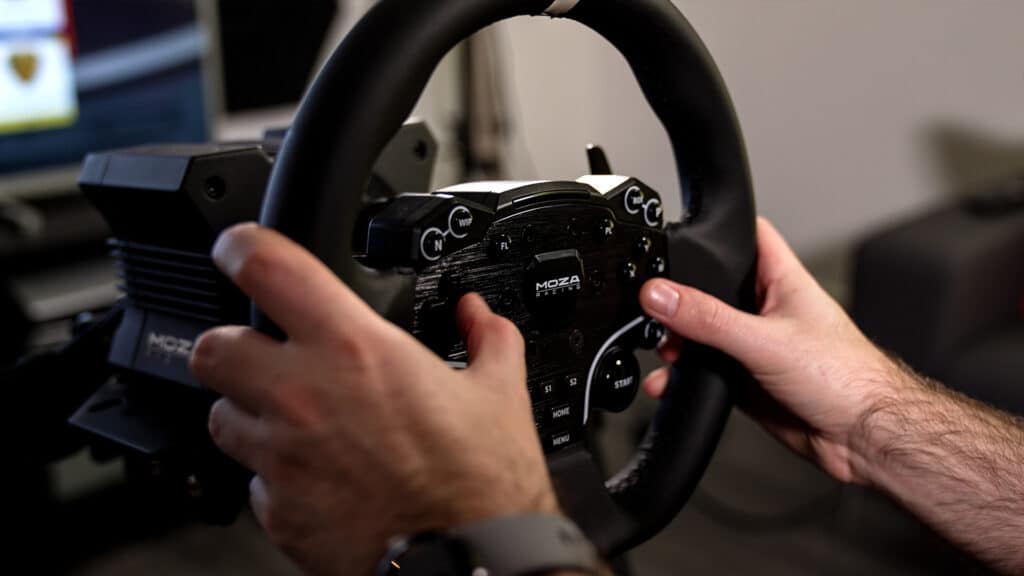
There’s almost not as much else to say when it comes to the overall feeling, as the R5 does pretty much what it says on the tin, which is a good thing. Paying a premium for more torque sometimes doesn’t appear to be the best call for some users, but perhaps having a touch of headroom would be good to enable some smaller, yet stronger sensations.
It would give you more clarity and definition over kerbs, as there were definitely points during gameplay where, while things were definitely feeling perfectly usable, the anticipated feedback felt a little muddy. All in all, however, the R5 in play is a solid experience.
At £569.00 excluding VAT here in the UK, it’s definitely in the same price bracket as the DD Pro from Fanatec, albeit without any console support. As its own entity, the MOZA R5 is a well-produced, solid shout for anyone wanting to give sim racing on PC a try, and not wanting to shell out literal thousands for a top-end direct drive wheelbase.
However, the SRP Lite performance kit is an absolute must in this scenario, as while the brake pedal works in practice, the lack of feedback is borderline unforgivable. Imagine trying to race without any force feedback in your hands. Having a brake pedal with no resistance is pretty much in the same boat.
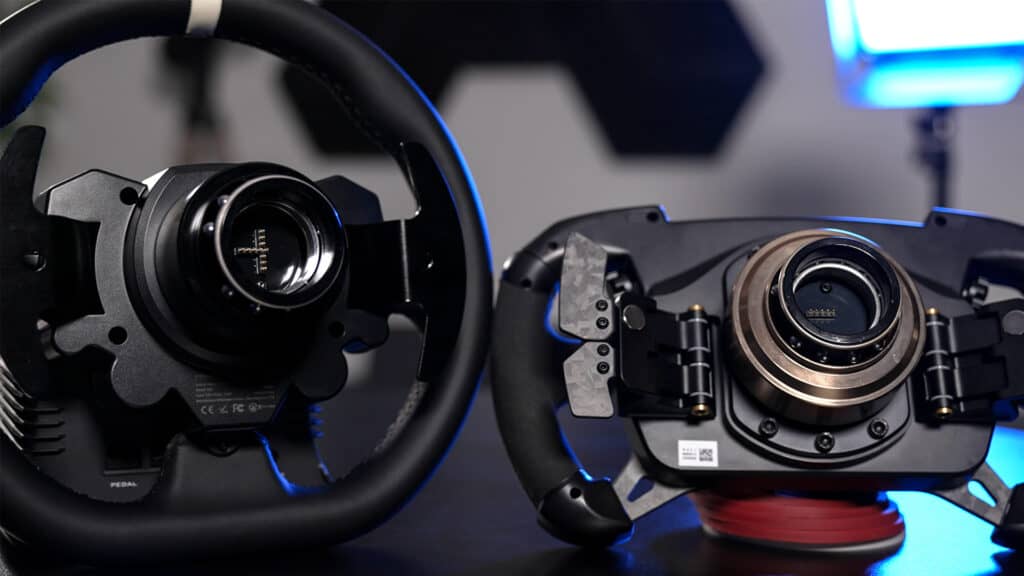
One major thing before I wrap up this review is that the quick release connection has changed slightly on the R5 base, and previous MOZA wheels don’t appear to be compatible. The GS and CS wheels we have here at Traxion HQ don’t speak to the base, and therefore the software.
So while you can attach it to the quick release mechanism (which itself has remained unchanged), the buttons and rev strip are purely cosmetic.
Products evolve, sure, but changing something that draws a proverbial line in the sand this soon after MOZA’s products started catching the eye of sim racers worldwide is a strange choice.
Perhaps some software or firmware updates will rectify this issue, but it definitely sticks the R5 base (and new FSR wheel) on its own island.
Update 19th October 2022
In response to our review, MOZA Racing kindly reach out with an update regarding future compatibility:
“We will carefully consider every suggestion you mention, especially regarding the adaptation of the R5 steering wheel,” read the statement.
“In the future, the Moza ecosystem will take this into account, so that the steering wheels and the base can be adapted to each other.”
Full disclosure: This product was provided by the manufacturer for review purposes. Here is our review policy.
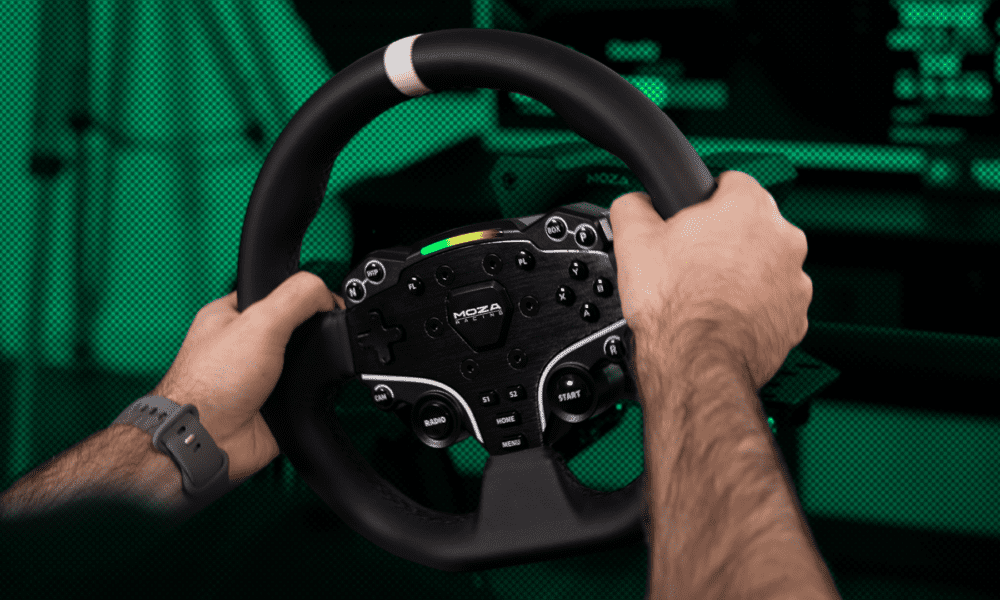




Chat with the Community
Sign Up To CommentIt's completely Free